
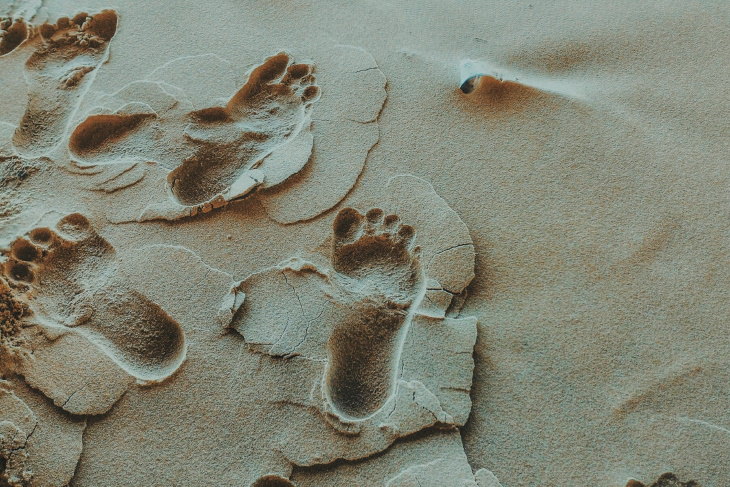
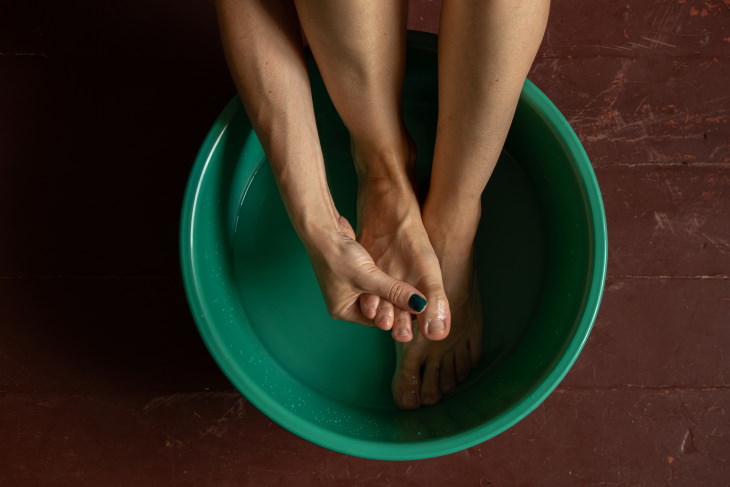
There’s a good reason why all foot treatments at the salon start with a nice soak. A foot soak isn’t just pleasant, it’s also extremely helpful at softening the rough patches of skin on your feet. By submerging the feet in warm water and soaking them until the skin turns wrinkled, you’re letting the outer layer of the skin soften and expand. This primes the normally hard and callused parts of your feet for further treatments and boosts their overall effectiveness.
You can soak your feet in a basin with warm water alone, or add other ingredients, such as Epsom salt or essential oils to the mix. We list several homemade concoctions you can add to your foot bath here - 5 Indulgent Foot Soaks for Sore Feet, Relaxation, and Detox.
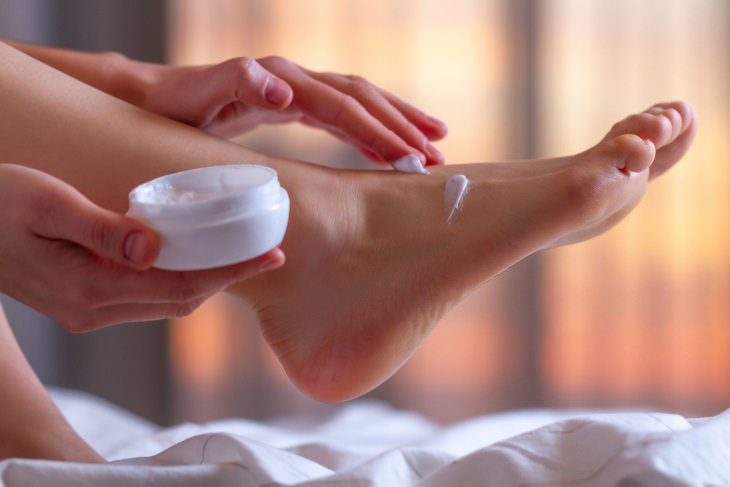
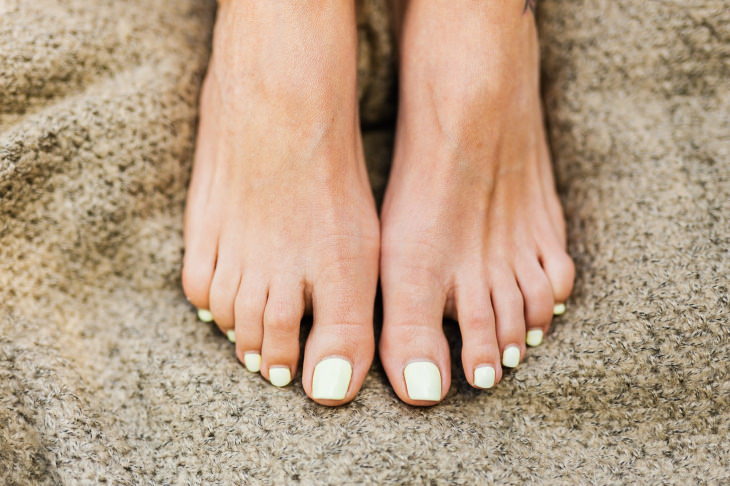
Exfoliation removes any dead skin from the soles of your feet. If you don’t moisturize and exfoliate your feet regularly, these dead skin cells tend to build up and create calluses and cracks in the heels. When it comes to the types of products that can be used to exfoliate the feet, you’re spoiled for choice. Loofahs, pumice stones, buffers, foot files, exfoliating foot creams, and even exfoliating socks are all widely available at supermarkets and drugstores.
As for the two latter choices, search for foot creams and socks with the following active exfoliating ingredients: salicylic acid, glycolic acid, ammonium lactate, urea, malic acid, and citric acid. When using an exfoliating cream or exfoliating socks, be careful to follow the instructions, avoid getting any of these products on your face, and wash your hands immediately after application to prevent skin and eye irritation.
And if you choose to go with a loofah or any other physical foot scrubber, avoid applying too much pressure. It’s best to use these exfoliants to buff away any skin build-up every week instead of really going in once a month and damaging your skin as a result.
Suffering from cracked heels? Read this guide to heal those pesky heels fast - Make Cracked Heels a Thing of the Past With These Remedies.
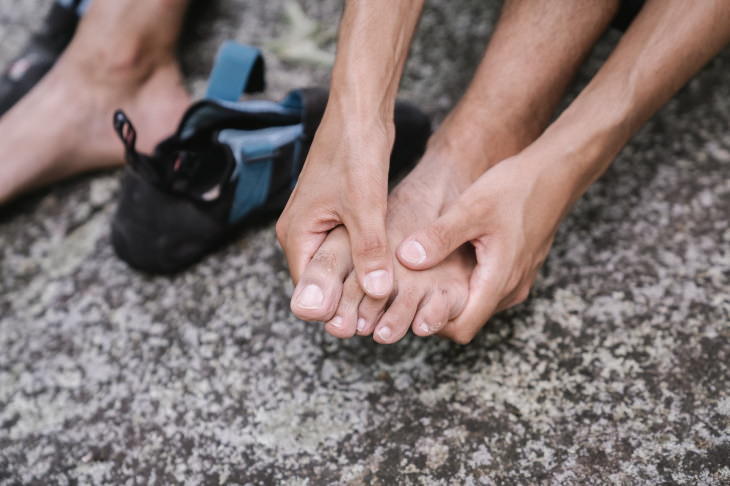
Even if you follow all of the tips we listed above, your feet may still continue looking rough if you insist on wearing only flip-flops all summer. The heels are especially adversely affected by flip-flops, a topic we discuss in great detail in the article How To Choose the Safest Footwear For Warm Weather.
All in all, wearing comfortable, closed but breathable shoes with good arch support is your best bet. As Kemmy Mokaya, a board-certified dermatologist stated to Best Life, "While sandals, flip-flops, and other open shoes are comfortable in the summer, they expose feet to the heat, the sun, and other moisture-depleting elements." So it’s in your feet’s best interest to avoid wearing flip-flops and other open shoes for more than a few hours from time to time.
Tired of foot odor? Consult our guide to banishing it here - Guide: 6 Steps to Odorless Feet.
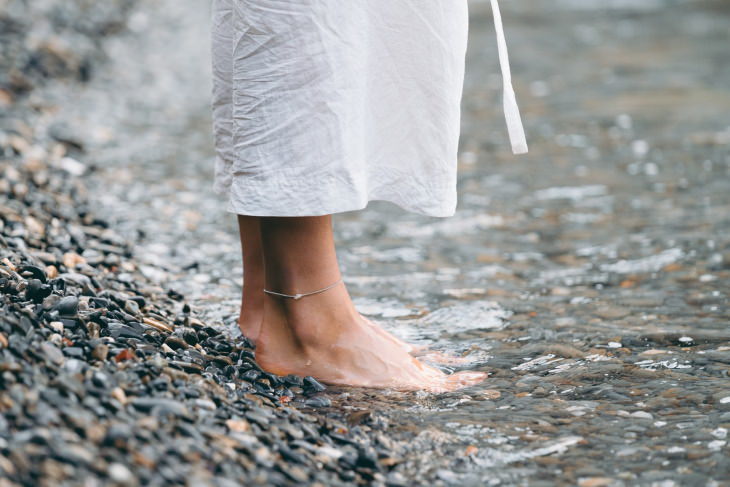
Skin burns on the soles and tops of the feet can be especially painful and slow to heal, so don’t ignore this part of your body. When spending time outdoors and wearing open shoes (or no shoes at all on the beach), don’t forget to slather on a thick layer of waterproof sunscreen on your feet and reapply every 2 hours if you stay outdoors.
With these 5 tips, your feet should be happy and healthy-looking all summer long!
Please share this article with family and friends
H/T: Best Life, Expert Home Tips, Healthline